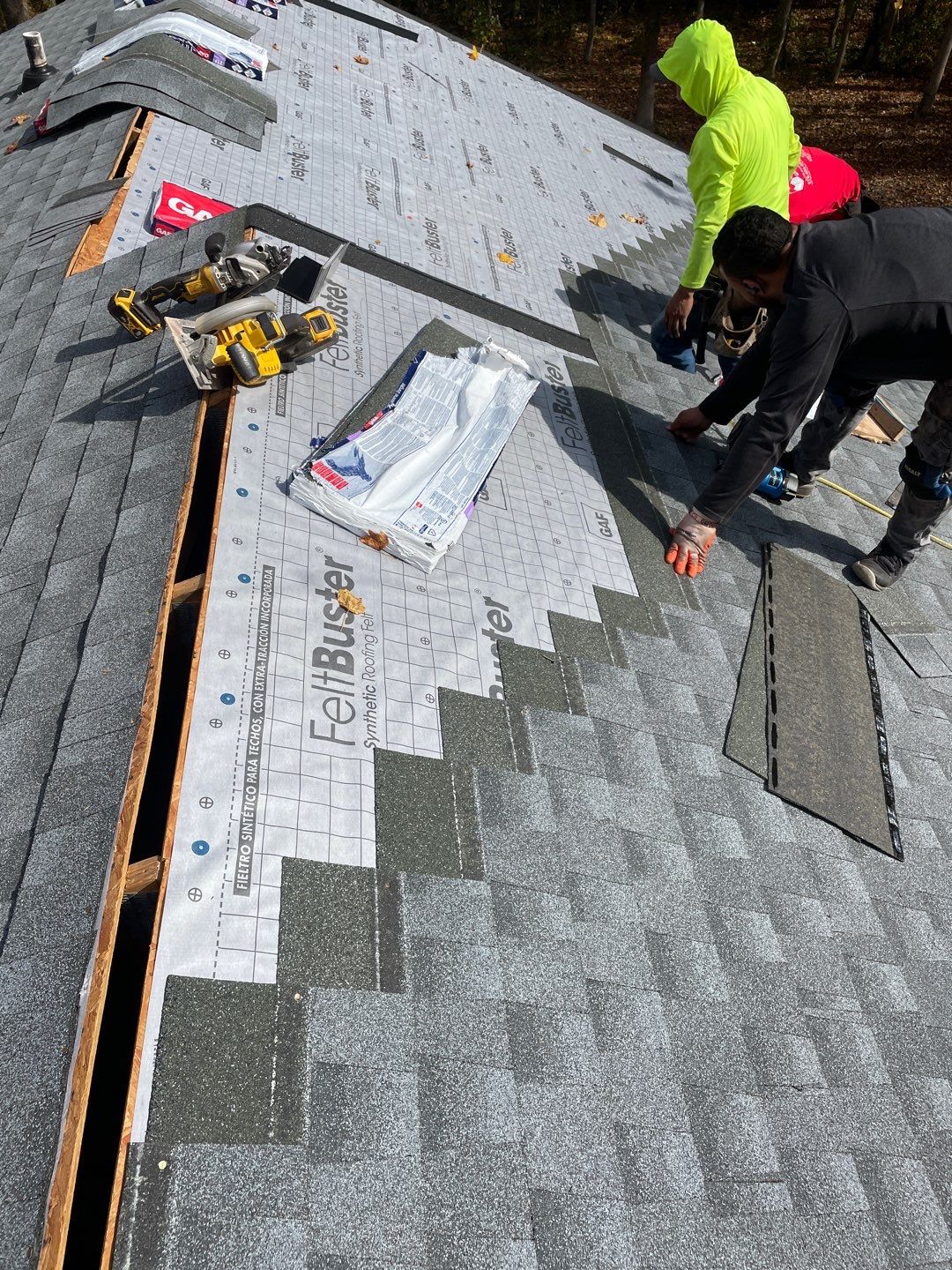Individual Testimonies on the Best Gainesville FL Roofing Companies Readily Available
Individual Testimonies on the Best Gainesville FL Roofing Companies Readily Available
Blog Article
Best Practices for Ensuring Appropriate Roofing Air Flow
Guaranteeing correct roof covering ventilation is important for the durability and effectiveness of a roof. A well balanced intake and exhaust vent ratio, frequently 1:300, plays an essential role, with consumption vents preferably put at the reduced side of the roofing system for great air entrance and exhaust vents at the top for warm air departure. Normal inspections to recognize obstructions and keep clear airflow are paramount. Maintaining insulation away from vents is important to protect against airflow limitation. Understanding these foundational elements establishes the stage for more thorough insights right into installment and maintenance practices that can dramatically boost your roof's efficiency.
Understand Air Flow Essentials
Effectively understanding ventilation basics is important for making certain the longevity and efficiency of roof. Efficient air flow reduces wetness buildup and temperature level extremes in the attic room, both of which can bring about considerable architectural damages over time. A well-ventilated roof covering helps in preventing typical concerns such as mold and mildew development, wood rot, and ice dams, which can jeopardize the stability of the roofing products and the underlying frameworks.
The main objective of air flow is to facilitate the activity of air, enabling a constant exchange between the exterior and interior environments. This equilibrium is attained with a mix of consumption and exhaust vents that work together to preserve optimal air flow. Consumption vents, generally situated along the soffits or eaves, enable fresh air to go into the attic space, while exhaust vents, often positioned at or near the roof ridge, enable hot, damp air to leave.
Key factors affecting the efficiency of roofing system ventilation consist of appropriate placement, adequate sizing, and guaranteeing that both consumption and exhaust vents are unhampered. Routine evaluation and maintenance are critical to recognize prospective obstructions, damage, or inefficiencies in the air flow system, consequently safeguarding the roof covering's efficiency and durability.
Kinds Of Roofing System Vents
Roofing vents play a crucial role in keeping effective attic air flow and, by extension, the general health and wellness of the roofing system. Different kinds of roofing system vents are readily available, each with one-of-a-kind advantages customized to particular roofing requirements. Ridge vents, as an example, are installed along the roof's peak, enabling cozy, moist air to get away from the attic. They use continuous air flow and mix effortlessly with the roofline, making them both effective and aesthetically pleasing.

Soffit vents are set up under the eaves and work in tandem with roof vents to make certain a well balanced intake and exhaust system. By allowing cooler air to go into from below, soffit vents promote the expulsion of warm air through top vents. Gable vents, located on the outside wall surfaces of the attic room, offer another efficient solution, especially in homes with gable roofing systems.
Evaluate Your Present Air Flow

Next, take into consideration the age and condition of your roof covering products and air flow elements. Older systems may not follow existing building ordinance or might have degraded over time, minimizing their efficiency. Conduct a comprehensive examination to determine any indications of deterioration, such as rust, damages, or spaces that might endanger the system's efficiency.
Additionally, determine the attic temperature level and humidity levels. High temperatures and moisture can show inadequate ventilation.
Setup Best Practices
Effective installment of roofing air flow systems is vital for making certain optimal performance and long life. Proper installation starts with recognizing the certain air flow demands of the building and the roof covering it covers. This involves determining the correct ratio of consumption to wear down vents, normally sticking to the 1:300 guideline, which states one square foot of ventilation for every single 300 square feet of attic room floor room.

Intake vents need to be installed at the roofing system's reduced edge, usually in the soffits, to allow awesome air to get in. Exhaust vents, on the various other hand, must be installed near or at the roofing's height to facilitate the leave of warm, moist air.
Seal all air vent connections carefully to prevent air leaks and potential water seepage. Usage high-quality materials and follow maker standards to make sure longevity and efficiency. Furthermore, integrating ridge vents with baffles can significantly enhance air movement performance by protecting against wind-driven rainfall and snow from getting in the attic room.
Eventually, precise setup of roofing air flow systems mitigates prospective issues such as mold development, ice dams, and structural damage, ensuring the roof covering's stability and the building's overall health and wellness.
Routine Maintenance Tips
Consistency in maintenance techniques is basic to making sure the long-term performance of roof covering air flow systems. Normal evaluations are critical, preferably done biannually-- in the spring and loss. During these examinations, make sure that vents are free of particles, nests, and other blockages that could hinder airflow. Look for any kind of signs of wetness buildup or mold and mildew, as these can indicate inappropriate air flow or leaks (roofing companies).
Use a soft brush or a vacuum to remove dust and debris from consumption and exhaust vents. Be cautious not to damage the vent displays or louvers during the process.
Proper insulation is equally vital. Make sure that attic room insulation does Visit Website not block the vents, as this can drastically limit air movement. If any kind of insulation has moved or resolved, reposition or change it to preserve an effective obstacle.
Finally, change any type of harmed or missing components promptly. Broken vents, use this link cracked roof shingles, or deteriorated blinking can all add to poor ventilation and must be attended to right away. Regular maintenance ensures that the roof covering air flow system functions optimally, consequently extending the lifespan of the roofing system itself.
Conclusion
Making certain correct roofing air flow is critical for preserving the efficiency and toughness of a roof. Adherence to the 1:300 intake and exhaust air vent ratio, paired with the strategic positioning of vents, is essential. Normal biannual evaluations, debris cleaning, and guaranteeing insulation does not obstruct air flow are crucial methods. Implementing these best methods will certainly cultivate a well-ventilated roofing system, consequently mitigating possible issues associated to moisture build-up and excessive warm, inevitably lengthening the roofing's click here for more life-span.
A well balanced intake and exhaust air vent proportion, frequently 1:300, plays a critical role, with consumption vents ideally put at the lower side of the roof covering for trendy air access and exhaust vents at the height for warm air leave. Consumption vents, usually situated along the soffits or eaves, permit fresh air to get in the attic area, while exhaust vents, often located at or near the roof ridge, enable hot, damp air to get away.
Soffit vents are installed under the eaves and job in tandem with roof vents to guarantee a balanced intake and exhaust system. By enabling cooler air to get in from below, soffit vents promote the expulsion of warm air through top vents. Adherence to the 1:300 intake and exhaust vent ratio, coupled with the calculated placement of vents, is necessary.
Report this page